You are here
Dubskiy Garden in Bautino.
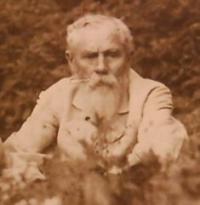
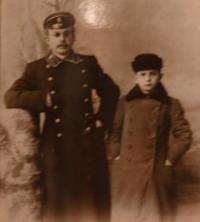
A tourist trip to Mangistau.
“Shevchenko, learning about what I was painting, advised me to go to Razumanovsky Garden, about seven miles from the fortress. Instead of a garden, I saw something striking in its wildness and originality. Huge fragments of cliffs dumped one into another descended in a picturesque mess from a 50-foot height to the flat coast of the sea, the boundless surface stretching into the distance. On one of the small platforms, fenced on three sides by a stone fence, stood three large wild-growing mulberries; several flower beds, a young vineyard on poles; a bridge over a crevice, a few benches - that’s the whole garden of Razumanov, named after a rich merchant who liked this area”
Troops foreman of the Ural Cossack army N.F. Savichev. From the memories.
Sightseeing trip to Bautino.
This is still called by local residents a garden planted on the western slope of the Koksay log, seven kilometers from the village of Bautino - a cultural monument of the Tupkaragan region. Although in fairness it must be said that this very garden was founded as early as the middle of the XIXth century by the first Russian settlers, according to some information, merchants, according to others, Cossacks, are reliably known - the Razumanov brothers and other settlers of the village of Nikolaevskaya.
Three wild mulberry trees were surrounded by a stone wall. In the garden, fruit trees and a vineyard were planted. For some time this garden was called Razumanov. Several creative canvases by Taras Shevchenko depict this very garden, for some reason called Mangyshlaksky.
In the memoirs of a contemporary of Taras Shevchenko, military foreman of the Ural Cossack army N.F. Savichev, who specially came to the Novopetrovsk fortification to meet with T. Shevchenko, this is what this garden says:
“Shevchenko, having learned that I am painting, advised me to go to the Razumanovsky Garden, about seven miles from the fortress. Instead of a garden, I saw something striking in its wildness and originality. Huge fragments of cliffs dumped one into another descended in a picturesque mess from a 50-foot height to the flat coast of the sea, the boundless surface stretching into the distance. On one of the small platforms, fenced on three sides by a stone fence, stood three large wild-growing mulberries; several flower beds, a young vineyard on poles; a bridge over a crevice, a few benches - that’s the whole garden of Razumanov, named after a rich merchant who liked this place.”
One of the owners of this oasis in the Tupkaragan rocky desert was Utepbergen Konlybaev. Then again, one of the Russian settlers, Alexei Belunin, bought it from Utepbergen, expanded the plantation, and built a pool. In the garden planted a garden.
In the essay “Life of the Kazakh steppes” by Bronislaw Zalessky, who was serving a link to Mangyshlak with Taras Shevchenko, the following is captured: “Near a rock“ Monk ”there are hundreds of strange mulberry trees growing.
They rise in crevices of calcareous deposits. Who planted them is unknown. According to the Kazakhs, the Turkmens, the long-standing rulers of these places, did this. These are quite large trees with dense foliage.
Rocks hung over the trees, which, as if from fear, were deeply rooted in the water. And there is clearly plenty of water here, otherwise the green giants could not grow under the burning sky of a place completely devoid of trees.
Since the construction of the Novopetrovsk fortification, this grove has been used as a resting place. Steps are cut down in soft stone, small bridges for transitions are thrown, a convenient bench in a limestone rock is carved - the only garden of its kind called Alexandrovsky.
Many plants take root here. With a lot of zeal and patience here it is even possible to grow grapes. This garden would be a real blessing for the residents of the fortification, if it was a little closer. This garden is a local attraction, because no one in the suffocating heat would have the idea to go under the sun for several kilometers in search of shade.
Almost always the garden is empty, and only the sea at the foot breaks the silence prevailing here with its roar. ” In 1884, the owner of the garden was the well-known fishery owner Zakhar Dubsky in the eastern Caspian. A large house with a veranda was built there, berry bushes, grapes, fruit trees were planted, a pool was arranged.
Vegetables were also grown. Land for the garden was imported from Astrakhan. The gardener was a Kazakh named Uraz. Well-off people from the village and volost authorities came here. This garden was Dubskiy's summer cottage.
For some time, his son Dmitry, who was seriously ill and was buried in a soldier’s cemetery, was nearby engaged in a summer residence. As for the garden, which is still called the Dubski Garden, despite the fact that it changed its owners several times, during the years of Soviet rule, a shelter for street children was organized on the territory of this garden.
At this time, the garden, "seized" by the Soviet authorities, was named after Sergei Mironovich Kirov. Later, under the canopy of dense vegetation, in the shadow of centuries-old trees, the Aray pioneer camp was opened.
Over time, the garden turned into a recreation area of local importance. During the perestroika years, the garden was leased to private ownership. In vain were the attempts by local authorities to return the Garden under state protection as a historical monument.
They say that weeping willows cry for a reason, apparently in the old days.
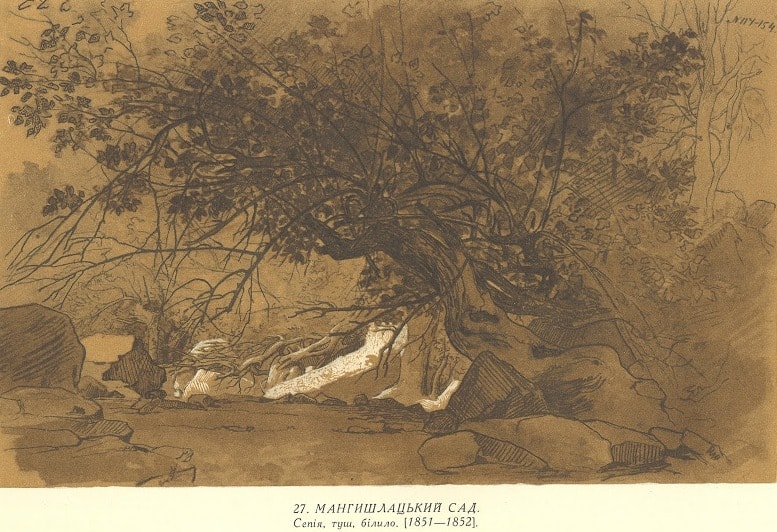



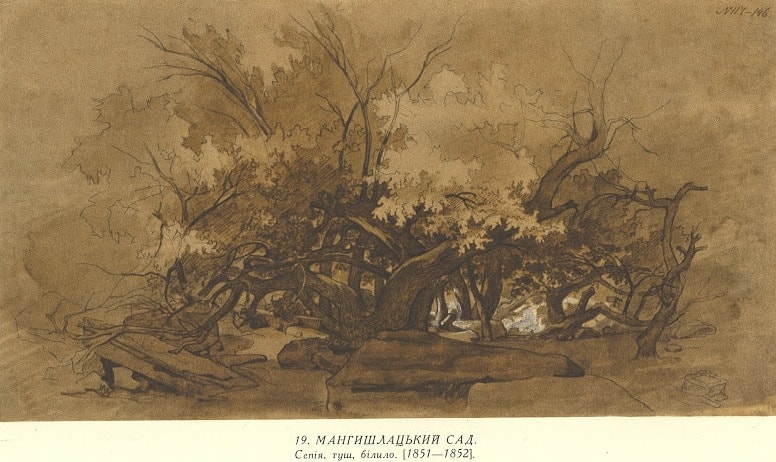
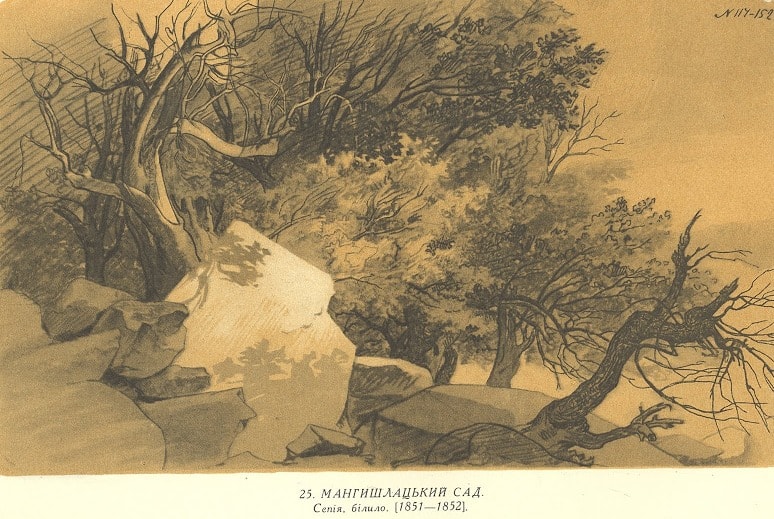




Authority:
Natalia Zaderetskaya. "Tupkaragan is the cradle of Mangistau."
Drawings
of Taras Shevchenko.







